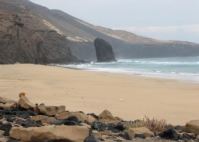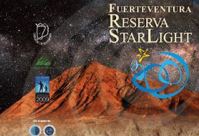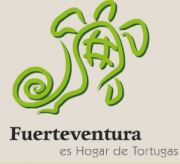Knowledge Networking Portal for Sustainable & Responsible Tourism










 Fuerteventura (ES)
Fuerteventura (ES)
| Contributor | DiegoNunez |
|---|---|
| Country | Spain, |
| Keywords |
|
| Release date | 29/06/2014 |
| Topics |
|
| GSTC Criteria for Destinations |
|
| Type |
|
| # | File name | Contributor | Release date | Uploaded by | Upload date | Size | Content type |
|---|
| Good Practice Innovation Sheet | ||||
    |
||||
| Items | Description | |||
| 1. WHO | ||||
| Key people and organisations (initiator, leader, partners) | Coastal and Marine Union EUCC and Cabildo de Fuerteventura (The Fuerteventura Inter-Island Council) | |||
| Key Figures | Surface | Inhabitants | Tourism arrivals | Tourism nights |
| 1660 km2 | 75,000 | N/A | N/A | |
| 2. WHY | ||||
| Reason for taking the good practice action |
1. Fuerteventura is one of the best tourism destinations in the world for observing the stars. The island has a large number of dark areas completely free of artificial light pollution, protected by a buffer zone which avoids the negative effects of air and light pollution reaching these dark areas. Excess light not only compromises the opportunity to contemplate the firmament at night, but it also disrupts the natural environment, wastes energy, and has the potential to cause health problems. In order to preserve and recover the quality of its skies, Fuerteventura is working towards achieving UNESCO Starlight Reserve status. This initiative aims to conserve the natural environment, revalorise the cultural heritage associated to the astronomic observation and improve the quality of life of its residents. 2. Declare a Biosphere reserve in 2009, Fuerteventura is home to an outstanding diversity of ecosystems and a wide variety of marine species. Several historic records have confirmed the presence of nesting loggerhead turtles on Fuerteventura’s beaches. However, man-made threats such as water pollution, industrial fishing, collisions with ships and boats and particularly the destruction of their natural breeding sites due to the demographic growth and the necessities of the tourism industry made them disappear from the Canary Islands. In order to re-establish a turtle population on the beaches of the Island, Fuerteventura is carrying out a programme to reintroduce the loggerhead sea turtle and protect their natural habitats. This initiative also aims to promote conservation tourism which makes a positive contribution to the continuing survival of these threatened animals. |
|||
| Issues and challenge | ||||
| 3. HOW | ||||
| Methods /steps / tools used (to develop the good practice) |
1. In 2008, the Fuerteventura Island Government adopted the Declaration in Defence of the Night Sky and the Right to Starlight in order to protect the quality of the night sky in the island. The efforts made by the Government of Fuerteventura in this 2. Since 2006, Fuerteventura is carrying out a project called “Proyecto Tortuga” aiming to establish again a loggerhead turtle population on the beaches of the Canaries. The beach of Cofete, in the island of Fuerteventura, was selected as ideal site to develop this programme. Turtle eggs are brought from Cape Verde islands and are placed in artificial nests on the west coast beach of Cofete until they hatch. Then, the hatchings are transferred to tanks at the “Sodade” turtle nursery, located in Morro Jable (Jandia), until they are big enough to survive. Throughout the summer and autumn months visitors have the opportunity to participate in the release of the baby turtles into the sea. In addition, loggerhead sea turtles that are found injured near the coast during the year are also cared for. Travel agents and beachfront hotels in sea turtle nesting areas are also involve in this initiative. They inform guests about the sea turtle reintroduction programme and provide relevant information about their conservation and protection (e.g. how to act if a sea turtle is encountered in tourist areas, the national laws protecting turtles, etc.) Therefore, visitors can participate actively helping to protect these endangered species. |
|||
| 4. RESULT | ||||
| Specific/measurable results, benefits | 1.
The Starlight Reserve concept has created new ways for a sustainable and creative tourism in Fuerteventura. Offering attractive activities that combine science and night sky observation has improved the quality of tourist experiences. Visitors and residents can enjoy clear and unpolluted night sky, an important part of the natural heritage of Fuerteventura. This initiative is also an effective way to make an efficient use of energy, limiting the negative effects on climate change and thus, improving the quality of life of the residents. By reducing light pollution and protecting the natural night sky the island has contributed to preserve the ecological integrity of natural environments and enhance the value of its natural resources. 2. Since 2006, this initiative has enabled to release into nature more than X specimens. This initiative has demonstrated that the tourism sector has the capacity to play a central role in the conservation of sea turtles in Fuerteventura. With this unique experience visitors and residents can feel in connection with nature and experience the joy of interacting with these species. Turtle-based tourism is an effective way to raise their awareness and inspire them to take a more active participation in protecting these species. In addition, such tourism contributes to foster social, economic and political support for the conservation of sea turtles. |
|||
| Recognitions (e.g. awards) | QualityCoast Gold Award 2012-‘13 | |||
| 5. REFLECTION | ||||
| Lessons learned |
1. The involvement of the different municipalities and business in Fuerteventura is an important key factor for the successful development of this initiative. 2. Cofete beach provides a suitable nesting habitat for loggerhead turtles in Fuerteventura and therefore an appropriate management control of the beach has demonstrated to be an essential factor in order to protect these species. |
|||
| Challenges met |
1. The Starlight Reserve distinction has been applied to others natural reserves located in Italy, Chile, New Zealand and China. This initiative aims to gradually create a network of tourism destinations holding a certificate that guarantees high-quality night sky. 2. The Fuerteventura experience can be used and applied in other destinations with sandy beaches with controlled tourism, within the distribution range of the sea turtle populations. |
|||
| Critical success factors | ||||
| 6. MORE | ||||
| web-references, documents | www.qualitycoast.info/?page_id=332, http://gestion.cabildofuer.es/fuerteventurabiosfera/ | |||














































